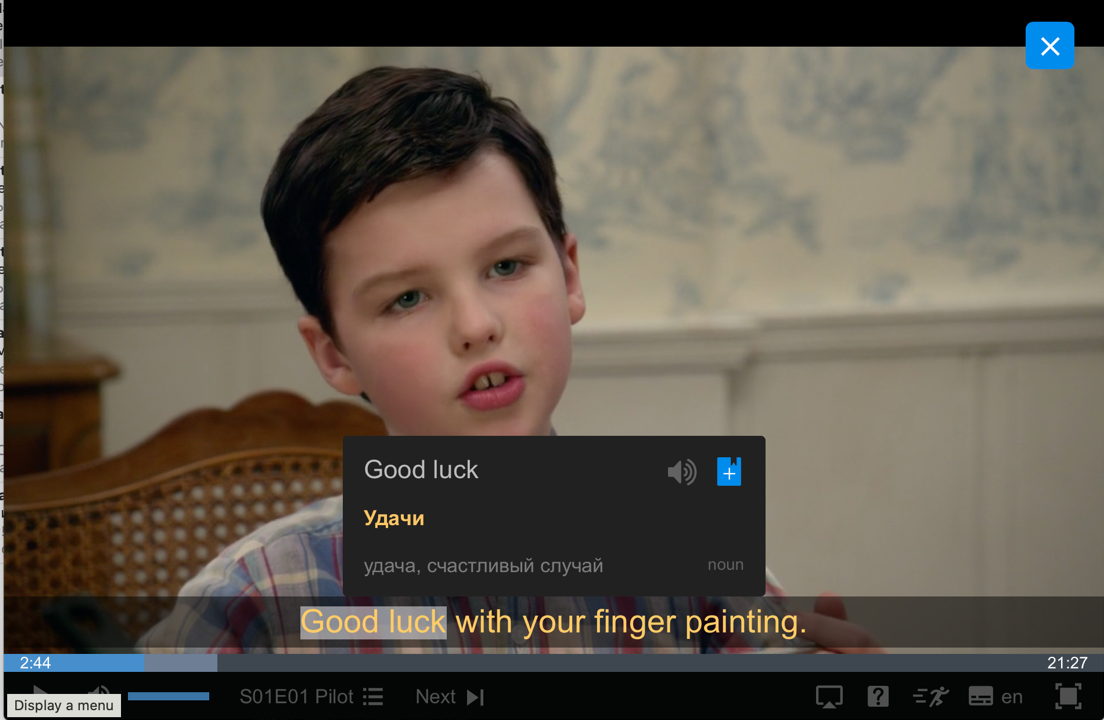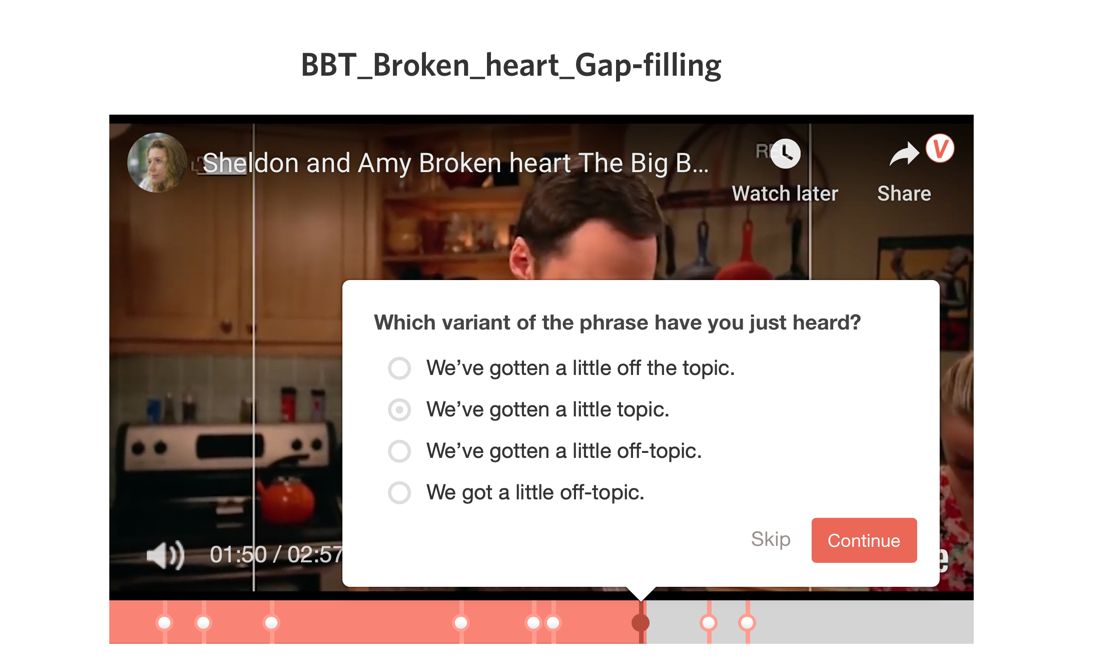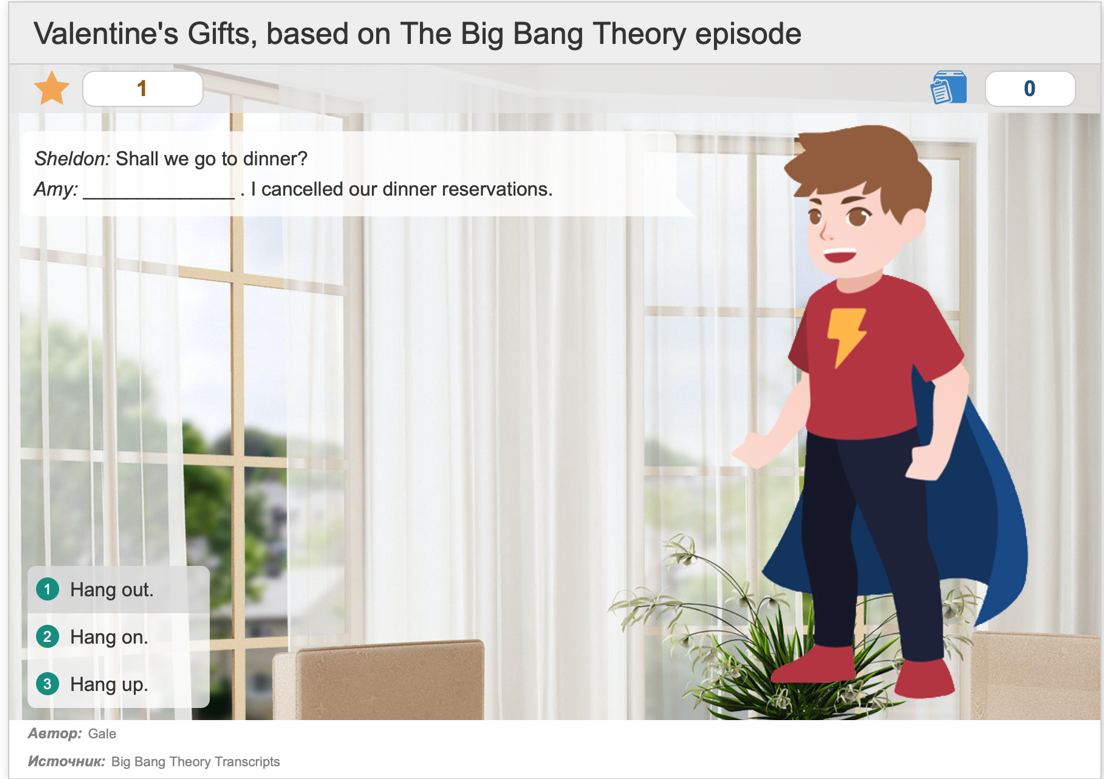Being an zealot of using TV shows in ELT, (such as The Big Bang Theory or The Marvellous Mrs. Maisel), I can’t but advocate introducing students to samples of authentic conversational speech and practicing it copiously.
What makes dialogues such a beneficial type of learning material? Here are some reasons:
- They represent the actual language in its spoken communicative mode, providing patterns and strategies to follow.
- They are set in a visual context, which makes them easy to follow and comprehend, as well as to pinpoint the meaning of specific words and expressions.
- They contain samples of conversational phrases and functional language, i.e. such phrases as What’s up? What’s eating you? Ask me another. I am good. Let me see it I’ve got this straight. You will have to walk me through that. We are done. Are you kidding me? So, now you are talking.
This being said, using of the dialogues at an English lesson looks like a sure way to boost your students’ conversational skills. Here are some suggestions on how to make dialogues a staple of your lesson.
Select your dialogue
In selecting a dialogue for a lesson, I would opt for conversations from sitcoms and movies. With all due respect, academic dialogues, even in the high-quality textbooks and online resources that aim at authenticity, there is some touch of artificialness, if you feel me on this. I have shared some pieces of advice about how to select the right fragments for your students, and now here are some ways to make them work out for developing conversational skills.
As a source for texts of the dialogues, you might want to use sites like ororo.tv or Simply Scripts. The advantage of the first on is the subs with the built-in translation feature (the fly in the ointment, however, is that it is for basic meaning of single words only, you can’t get either set-phrases or the contextually appropriate option):

By the way, this screenshot here is from “Young Sheldon” spin-off of “The Big Bang Theory”, and yes, this is him. Another reservation is that the choice of TV shows on ororo.tv seems quite limited.
In Simply Scripts, on the contrary, you may find virtually any movie or series in English, and that would be the actual downloadable script. You may pick the extracts of the dialogues that you find relevant or even use the scene descriptions for a staged performance at the final stage, quite a choice.
Focus on conversational formulas and set-phrases
There are several ways to do it. The one I like most is gap-filling activities. Delete the conversational phrases and functional expressions from the text and prepare a presentation or any other material to show these phrases in context, the one from the movie and in a number of different situations. At the lesson, show the video fragment, ask the students to sum up what they have seen or prepare a list of listening comprehension questions for them. Then give the students the handouts with the script and ask them to fill in the gaps with the phrases. You might need to pause the video after each missing part. Thereafter discuss the functional meaning of the conversational phrases (using a presentation or handouts). Let the students practice reading the completed dialogue in pairs. Then provide them with similar but slightly varied situations so that they could create their own dialogues and use the expressions in a different context.
Another way to focus on functional vocabulary is a multiple-choice listening activity. I use vizia.co for this, and have shared some my experience in a recent article. Here is an example that shows how this task can help to lay emphasis on the “minor” elements of the conversational and other set phrases:
 There is a modification for the latter option, that is a dialogue dictation. Pause the video after a target conversational formula or phrase and let the students put it down. Check the results in the group. Then ask the students to reproduce the situations in which these expressions have been used, either in the form of retelling or by acting out the mini-scene.
There is a modification for the latter option, that is a dialogue dictation. Pause the video after a target conversational formula or phrase and let the students put it down. Check the results in the group. Then ask the students to reproduce the situations in which these expressions have been used, either in the form of retelling or by acting out the mini-scene.
One more technique might suit younger learners or the student with low Intermediate, for whom listening to authentic conversation might still be challenging enough. After the first viewing and some general comprehension questions, you can do the scripted puzzle activity. Cut the printed-out script into parts, mix it and ask the students to put the script together. This activity involves reading, which is a good way to focus on target vocabulary at this level.
All the world’s is a stage
Nothing beats memorising dialogues and acting them out if you are aimed at having your students to build confidence in using conversational English. To make this task less monotonous for the student, you might want to make it interactive, consider Online Test Pad as an option.

The built-in templates and characters are somewhat primitive and inelegant, but you can get into extra sweat of uploading your customised one.
Another option might be reproducing or recreating the dialogues. It opens up room for creativity, just make sure the target language is in place. Handouts with the key-phrases may be helpful here. Alternatively, you may ask students to use their notes from the dictation activity, if you have done that in class.
At the final stage you may ask students to think of an alternative development of the situation, changing the details of the dialogue but keeping its core in place. Alternatively, they might feel like shifting the situation to their contexts and act out the same frame in the context that is realistic for them personally.
The main piece of advice is to engage the students and let them have a life-size experience and practice. The nature of conversational language is such that it is best mastered in interaction, which in its turn should better be enjoyable and meaningful for the learner.






 Маргарита Аветисян
Маргарита Аветисян 
 Вероника Аветисян
Вероника Аветисян 


